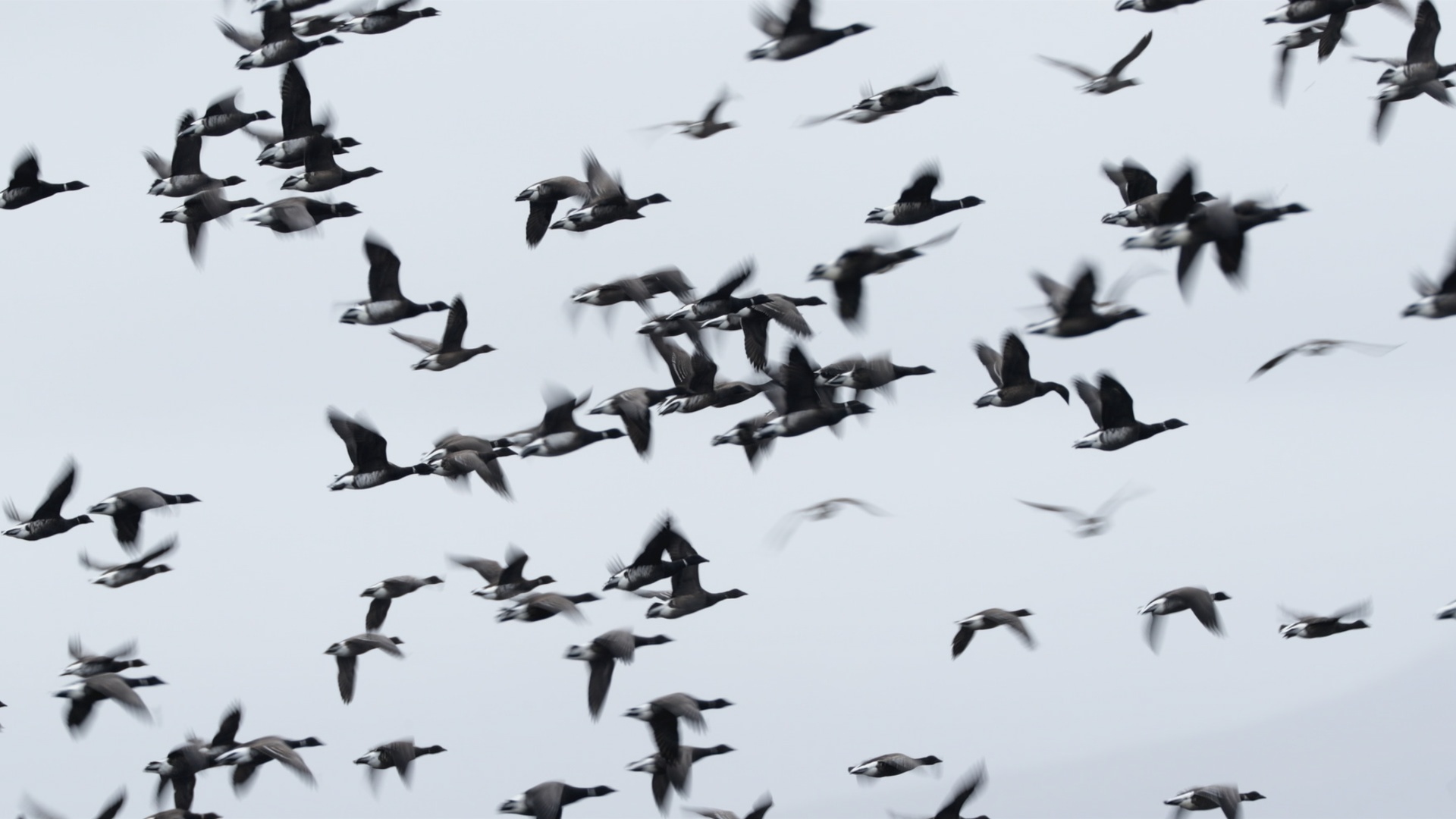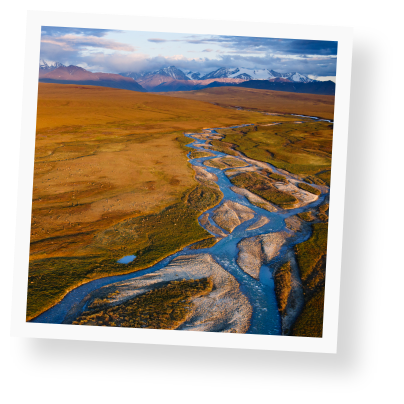By Jeff Fair
This blog is based on an excerpt from the book On Arctic Ground: Tracking Time through Alaska’s National Petroleum Reserve, from an essay “Seaside Stopover for Birds and Sea Mammals– Kasegaluk Special Area,” by Alaskan writer and field biologist Jeff Fair. The Kasegaluk Lagoon is a summer habitat, migration rest stop, nursery, and feeding ground for various species, from loons to polar bears, along the Chukchi Sea.
IN ALASKA'S FAR WESTERN ARCTIC, where the National Petroleum Reserve-Alaska meets the shore of the Chukchi Sea, 125 miles of nearshore barrier islands create the sinuous and shallow Kasegaluk Lagoon. One of the largest undiminished coastal lagoon systems in the world, this curvaceous mosaic of sand, gravel, and tide is fed by five major rivers, including the Utukok. Several passages through the barrier islands allow the sea to mix with freshwater, a uniquely rich estuarine environment. The lagoon's combination of plentiful food and coastal protection supports the highest abundance and diversity of bird life of all the coastal lagoons of Arctic Alaska, while also attracting sea mammals to its quiet sands and prolific fisheries.
Although the entire lagoon must be considered an ecosystem, political arbitrariness included only the northern third of it within the Reserve for conservation consideration. Overall, Kasegaluk Lagoon is extremely important in Alaska's western Arctic to coastal marine mammals and nesting, staging, and migrating waterfowl, as well as to Iñupiat subsistence hunters.

Kasegaluk means "Spotted Seal Place" in the Iñupiaq language, and four of fourteen traditional spotted-seal haulouts in the Chukchi Sea are located on the barrier islands of this lagoon. These haulouts in the Chukchi-part of the Arctic Ocean between eastern Russia and western Alaska attract more than 1000 spotted seals daily from mid-July into early September. Spotted seals are an important food of polar bears.
The Kasegaluk Lagoon Special Area (KLSA), designated in 2004, offers the choicest summer habitats in the northeastern Chukchi Sea for both spotted seals and beluga whales, because it includes prolific runs of fish and shrimp on which they feed. Beluga whales concentrate here at traditional sites along the barrier islands and in the ocean inlets where the beaches are just right for them to molt-rub off their old outer skin. Many belugas calve here as well. Walrus haulouts along the barrier islands are increasing in frequency and numbers of animals, likely as a result of climate change as the sea ice recedes earlier and farther north. All three of these marine mammal species are important Iñupiaq subsistence foods.
Polar bears use the barrier islands and shorelines for escape, travel lanes, feeding, and, more often now, maternal denning as their pack ice habitat decreases. The KLSA's strip of barrier islands is a hot spot for collecting beached sea mammal carcasses, which provide rich carrion to the threatened polar bear. Grizzlies, too, appear to feed here, having ventured all the way down from the DeLong Mountains and Arctic foothills (together, one of the four proposed special areas) along the Utukok and other river corridors to take advantage of this shoreline bounty.
A nesting colony of common eiders, a declining species that nests on barrier islands, currently flourishes here, along with high densities of nesting spectacled eiders (a threatened species), black brant, long-tailed ducks, northern pintails, Pacific and red-throated loons, and greater white-fronted geese.
More than 25,000 shorebirds of nineteen species, including thousands of red phalaropes and dunlins, have been observed here.
The KLSA also provides a perfect staging and migration area for many sea ducks and shorebirds leaving Alaska's coastal plain in the Arctic autumn.
As many as 40,000 Pacific black brant (half the world's population) rest and feed here each year during their first stage of fall migration in late August and early September, most heavily concentrated in the northern third of the lagoon, which is within the Reserve. All of the North Slope's king eiders pass through here during migration.
Video provided by Cornell Lab of Ornithology
In 2004 the Bureau of Land Management deferred oil and gas leasing here for ten years, but there is no permanent protection for the KLSA or its denizens. Belugas and spotted seals are of delicate temperament, reacting negatively to human presence, aircraft, and nearby boat traffic, as do walruses when they haul out. Air traffic can terrify mother belugas delivering young; spotted seals, the wariest of all seals, are especially affected.
Permanent protection of the lagoon's fragile and life-sustaining ecosystem appears justified for maximum conservation of fish and wildlife "surface values," as Congress originally required when it transferred the Reserve to the Department of the Interior in 1976. So too would be protection against any mining of the lagoon's gravel and any future seaport location near here to facilitate oil, gas, or coal export.
ABOUT JEFF FAIR
Freelance field biologist and author Jeff Fair has studied various species, primarily loons, from Maine to Alaska for 40 years. He was formally trained as a wildlife biologist and received an MS in Wildlife Ecology from UNH. Fair has trapped and radio-collared grizzly bears in Yellowstone and introduced snakes to tourists as a US Forest Service naturalist in Oklahoma, but he made his home and living in Alaska since 1995. His essays have appeared in Audubon magazine, Alaska magazine, Natural History, The Christian Science Monitor, Equinox, Ranger Rick, and Appalachia, where he is a contributing editor. Jeff Fair’s writing has been anthologized in Loons: Song of the Wild, Travelers’ Tales Alaska, Arctic Wings, Arctic Voices, and On Arctic Ground. He has received the National Press Club’s Travel Journalism Award and the National Wildlife Federation’s Farrand/Strohm Writing Award. His books include In Wild Trust, The Great American Bear, and three children’s wildlife titles.




